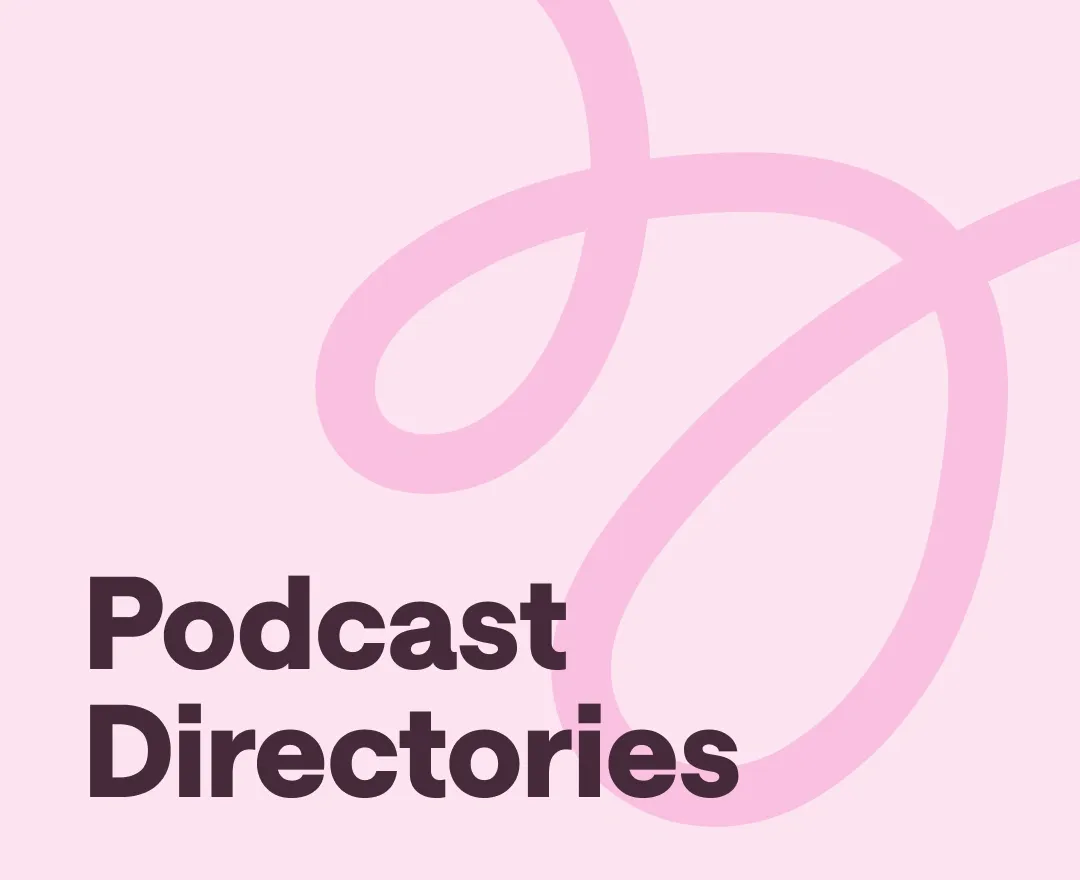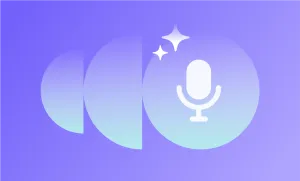You’ve hit publish. Your trailer’s up. Maybe your first few episodes too. But outside of friends, family, and that one superfan from your Reddit AMA… no one’s listening.
But before you rush to the unfair conclusion that it might be a failure in your content, let's assume that the issue might just be distribution. Because for podcasting, that's everything.
Where you post your show can shape your entire growth journey. Different platforms attract different types of listeners. Some have better search tools. Others have better recommendations. A few are still the go-to app for casual fans.
This guide breaks down the 10 podcast directories you should be posting your show in right now — not 2019, not last year — but in 2025. Each one plays a different role in helping your podcast grow.
Let’s dig in.
The Best Podcast Directories in 2025
1. Apple Podcasts

If you had to pick one directory to start with, this is the one. Apple Podcasts still holds a special place in the podcasting world, partly because it helped shape the industry in the first place, and partly because of the 28 million iPhone users who open the app without even realizing it’s pre-installed.
But reach isn’t the only reason people keep submitting their shows here. When someone searches for your podcast title on Google, Apple Podcasts is often the first result they see. That means even if they end up listening somewhere else, your Apple listing helps you get found.
The backend’s been simplified over the years, too. You can now manage your show through Apple Podcasts Connect, which lets you submit, update, and even access some basic listener analytics — all from one place. Just keep in mind: Apple’s approval process can take a day or two, and they’re picky about RSS feed formatting.
Still, if you’re launching a new show or refreshing an old one, this is usually where you start. Not because of some unwritten rule, but because visibility here can lead to discoverability everywhere else.
2. Spotify

From just a music app, Spotify turned podcasting into a center-piece of its identity over the years. And while some of the hype has settled, the impact hasn’t gone anywhere.
This is now one of the top platforms for podcast listening. It’s built right into people's music habits. A Spotify listener might jump from a morning playlist into a comedy podcast on their commute, without thinking twice.
Submitting your show is easy. You’ll do it through Spotify for Creators, which also gives you stats on follower growth, unique listeners, and even average episode completion. The interface is clean, fast, and made with creators in mind.
The best part is Spotify's recommendation tool. That means your podcast can show up for people who’ve never heard your name, just because they liked something similar. You’re not shouting into the void. You’re dropping into feeds, quietly, in the background, with surprising precision.
3. YouTube Music

When Google phased out Google Podcasts, they didn’t just merge it into YouTube Music out of convenience. They saw how people were already using the main YouTube platform to listen to podcasts, even when those videos had no visuals. Instead of fighting the trend, they built around it.
Now, YouTube Music has a dedicated podcast section. Not buried. Not awkwardly jammed between playlists. A real space, with podcast categories, search filters, and recommendations. And if your show already lives on YouTube, adding it to YouTube Music happens almost automatically. You just need to mark it as a podcast in your Studio settings.
There’s also an advantage here that’s hard to replicate elsewhere: the search power of YouTube itself. People type full questions into that search bar. They look for topics, interviews, reactions. And when your podcast episode lines up with what they’re looking for, it can surface in ways that feel entirely organic.
4. Amazon Music
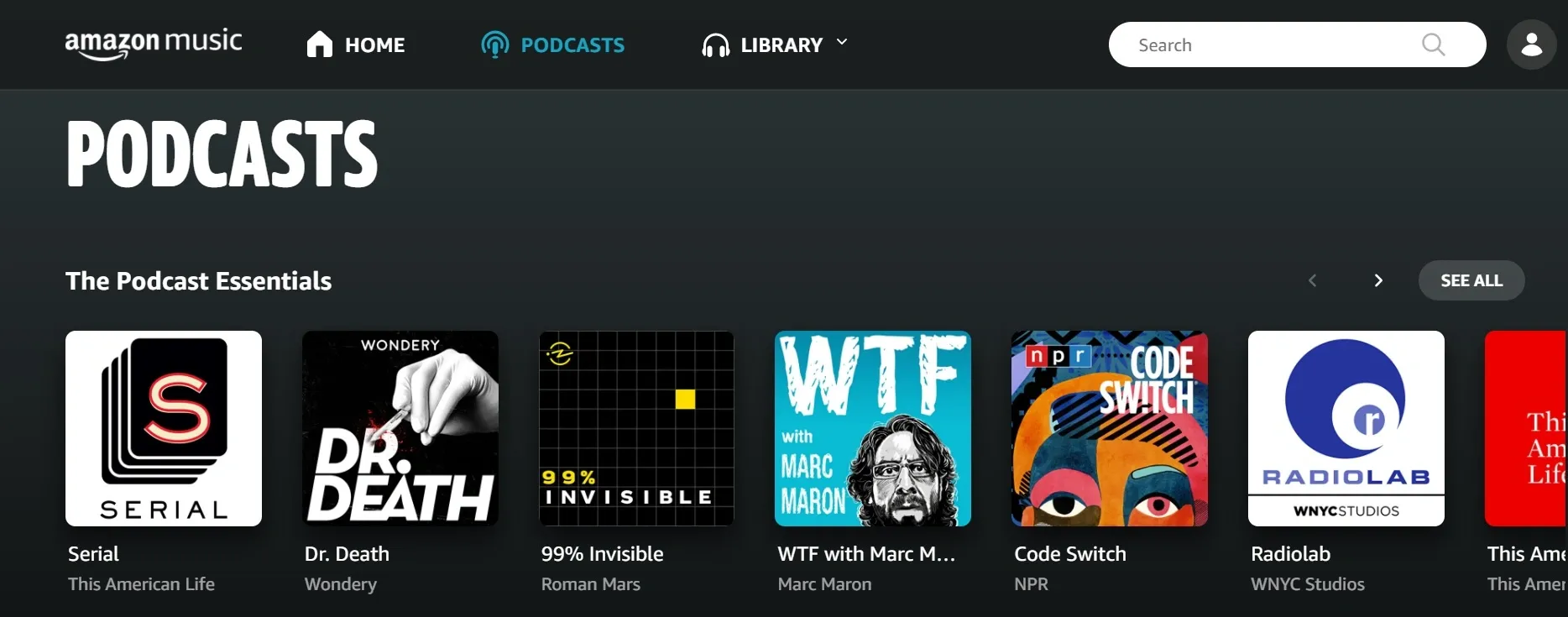
Amazon Music doesn’t usually come up in the first wave of podcast conversations, but it should, as it serves a large and growing audience that listens across Amazon devices, especially smart speakers like Echo, which are still in tens of millions of homes globally.
That integration matters. If someone owns an Alexa device, they don’t need to search, download, or even know your show exists beforehand. They can just say, “Alexa, play [your podcast name],” and it starts streaming directly from Amazon Music. For passive listeners or people who aren’t checking podcast charts every week, this kind of ease leads to real plays.
Submitting your show is straightforward. You use the Amazon Music for Podcasters portal, drop in your RSS feed, and Amazon syncs it across its music app, Audible, and Alexa-enabled platforms. There’s no waiting list. Most shows are live within a few hours. You also get access to Amazon’s analytics dashboard, which breaks down plays by episode, device, and location, though it’s still a little more limited than what Spotify offers.
You won’t find the same community or playlist-style discovery tools here. But what you do get is access to a huge, often-overlooked group of listeners who prefer passive consumption and voice-activated access. And that group keeps growing.
5. SiriusFM (Stitcher's Parent Company)

For years, Stitcher was the app that serious podcast listeners swore by. It launched back in 2008, before most people even knew what a podcast was, and it built a loyal base by focusing entirely on spoken-word content. And for a long time, that made it a top-tier directory for creators to be on.
But as of August 2023, Stitcher’s standalone app was officially shut down by its parent company, SiriusXM, which integrated all of Stitcher's podcasts. And submitting to SiriusXM now means having your podcast distributed across its podcast network, which includes apps like Pandora and their own SiriusXM mobile platform.
SiriusXM has shifted its focus from having a separate Stitcher app to integrating podcasts directly into its full ecosystem that includes millions of satellite radio subscribers and streaming users. When you submit your show via the SiriusXM Podcast Connect portal, your content becomes accessible in all of those places, and not just to podcast app users.
So while Stitcher the app is gone, Stitcher the infrastructure still delivers reach. Submitting your show through this channel puts it in front of a more traditional media audience, which is something most creators never even think about targeting.
6. TuneIn

TuneIn has always blurred the lines between radio and podcasts. Instead of building a podcast-first platform like Apple or Spotify, it leaned into live content from the start, streaming radio stations, sports broadcasts, news updates, and slotted podcasts in right beside them. That positioning still makes a difference in 2025.
The platform reaches over 75 million monthly active users across 197 countries, and many of those listeners aren’t browsing podcast charts or following creators on social media. They’re hearing podcasts play automatically after a live segment ends. They’re finding new shows while listening to a local news station on their smart speaker or in the car.
Submitting your show is easy. You’ll go through the TuneIn Podcast Portal, where you paste your RSS feed, verify ownership, and set your show’s metadata. Once you’re in, your podcast becomes playable on the TuneIn mobile app, the website, voice assistants like Alexa and Google Assistant, and any hardware partner that supports the TuneIn ecosystem.
The app itself isn’t as modern or polished as something like Pocket Casts, but that’s not why you’re here. You’re here for reach. You’re here because someone scrolling through their car dashboard might come across your latest episode by accident. And sometimes, that kind of frictionless exposure works better than an algorithm would.
7. iHeartRadio
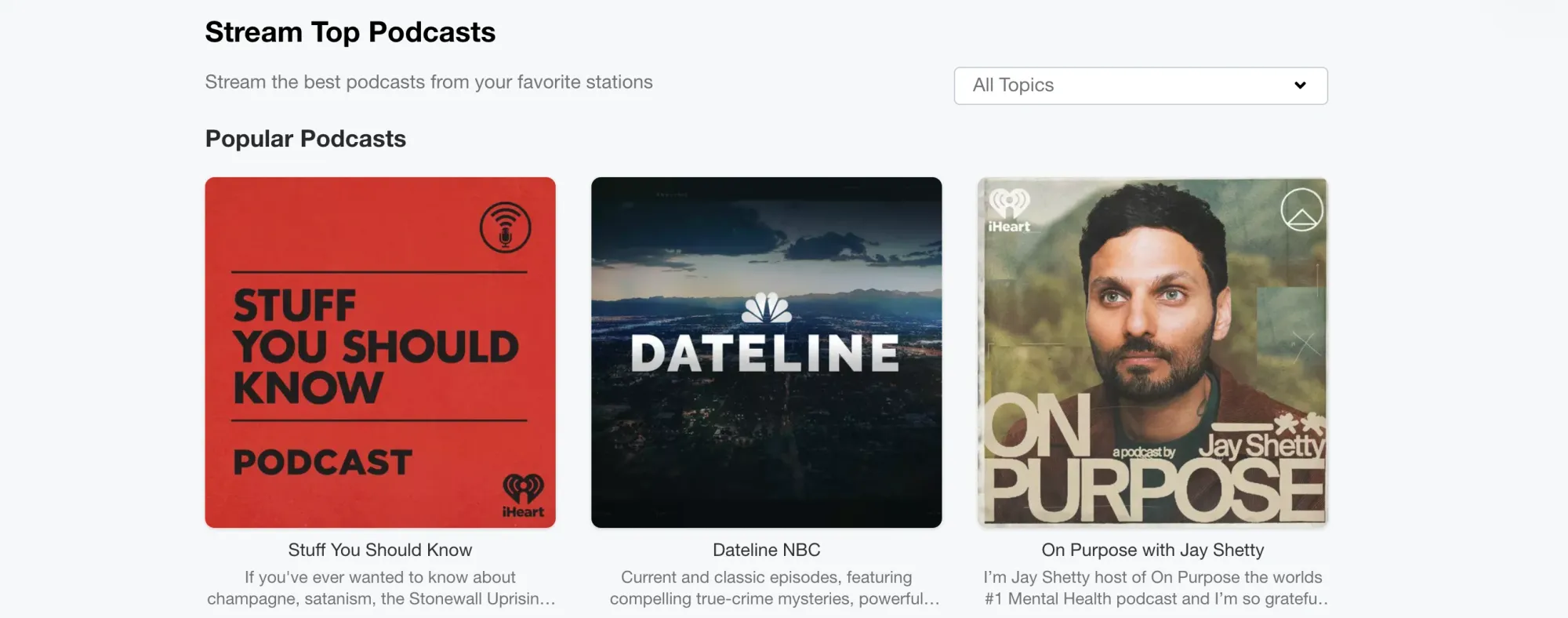
iHeartRadio started as a digital extension of traditional radio, but it’s grown into one of the most active players in podcasting. Today, it ranks consistently in the top five platforms by total podcast audience in the U.S., and its parent company, iHeartMedia, owns or distributes hundreds of high-performing shows, many of which top the charts across other directories too.
But you don’t need a massive production budget to get listed. Independent creators can still submit their podcasts through the iHeartRadio submission portal by providing a valid RSS feed and some basic metadata. Once approved, your episodes are distributed across their mobile app, web player, and even smart devices like Roku and Sonos.
The real advantage of iHeartRadio is its hybrid setup. It blends live radio, curated playlists, and podcasts into one user experience. That means a listener could be tuning in to a morning radio show, tap into a true crime podcast on the same screen, and end the day with your interview episode—all without leaving the app.
iHeart also has reach where most podcast platforms don’t. It owns over 850 broadcast radio stations in the U.S. alone and often promotes podcast content on air. So if you’re lucky, or if your content aligns with one of their internal themes, your show could get featured beyond digital feeds—on real radio, with real-time listeners.
8. Castbox
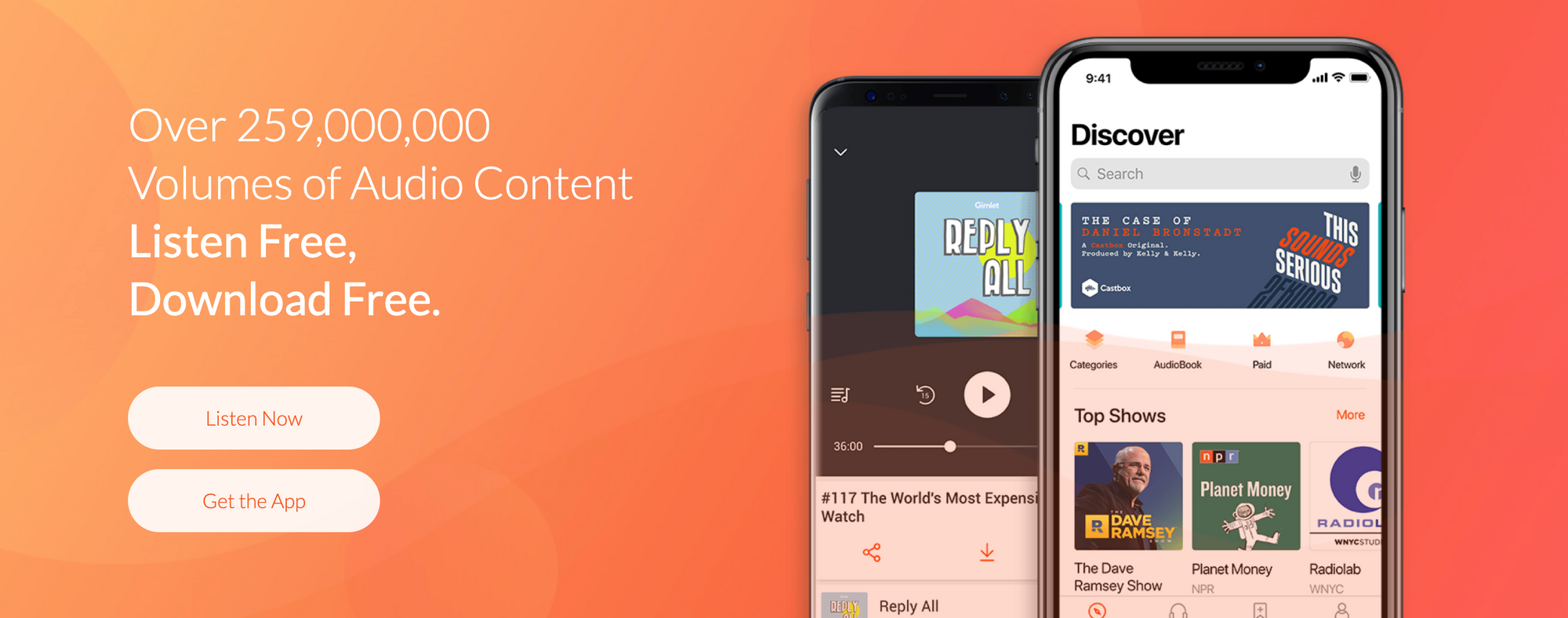
Castbox doesn’t have the name recognition of Spotify or Apple, but it quietly built one of the most functional and creator-friendly podcast apps out there. It hosts over 100 million episodes and supports listeners in more than 175 countries, with a growing user base in the U.S., Europe, and parts of Asia.
The app includes a powerful in-audio search feature that scans transcripts of episodes for keywords. That means a listener searching for “sleep hacks” could land on your podcast even if the phrase never appeared in your title or description. The discovery experience is deeper, more content-based, and surprisingly accurate.
Submitting your show is free and simple. Just head to the Castbox Creator Studio, drop your RSS feed, and your podcast goes live within a day. You can edit your show’s details, track listener stats, and even monetize directly through the app’s built-in ad system or listener support tools.
Visually, Castbox is clean and easy to navigate, and the playback options are surprisingly advanced for a platform that doesn’t get as much attention. Custom playlists, sleep timers, audio boosting, and cloud syncing across devices all come standard. It’s the kind of experience that turns casual listeners into loyal ones.
9. Pocket Casts

Pocket Casts has always felt like it was built for listeners who care about clean audio, smart controls, and keeping their library organized across devices.
The app supports both Android and iOS, and it syncs flawlessly across phones, tablets, and desktop browsers. You can start an episode on your laptop and finish it later in the car without losing your place. Playback controls go way beyond the basics too, with trim silence, variable speed, chapter navigation, and automatic download settings all available without digging through menus.
From a creator’s perspective, you can manually submit your RSS feed through their simple submission form, and once approved, your show becomes part of one of the cleanest podcast libraries in the space. The app doesn’t flood users with audio ads or push house-made content. It focuses on usability, and your podcast gets to sit front and center in whatever categories you choose.
Pocket Casts also supports open RSS feeds, which means no paywalls, no exclusivity requirements, and no weird embedding issues. Your show appears as it’s published, exactly as intended.
10. Pandora

Pandora built its name on music, but over the past few years, it’s carved out a space in podcasting that’s worth paying attention to, especially if you’re trying to reach listeners who aren’t already knee-deep in the podcast world.
The platform brings in over 50 million active users every month, and many of them are using the app the same way they’ve used it for years: hitting play on a station and letting the algorithm take it from there. That matters, because Pandora doesn’t just list your podcast—it recommends it. Their Genome Project, which was originally built to classify and recommend songs, has been adapted to understand podcast traits too. That means your show can end up in a playlist or discovery feed based on tone, pacing, or topic, even if the listener has never heard of you.
To submit your podcast, you’ll go through Pandora for Podcasters. It’s a quick process, but approval can take a little longer here—sometimes up to a few weeks—because of Pandora’s curation model. They don’t accept every show, but they do review submissions consistently, and once your show is in, it benefits from exposure across the entire SiriusXM ecosystem.
Pandora’s user base leans slightly older than Spotify or YouTube Music, and that audience tends to stick around for longer sessions. This also isn’t a directory for overnight traction. It’s for steady, background growth. If you’re starting a podcast with long-term sustainability in mind, adding Pandora to your distribution list makes a lot of sense.
Final Thoughts
There are a handful of podcast directories out there worth your while, each with specific features and audiences. Make sure to prioritize the most popular ones – Apple and Spotify – and see the rest as other opportunities to grow your reach even further.
If you're thinking of creating a podcast, or hosting it but don't know where to start, check out our AI-powered content creation suite. It's packed with everything you need to get your show up and running and out there to the world, faster than ever.
